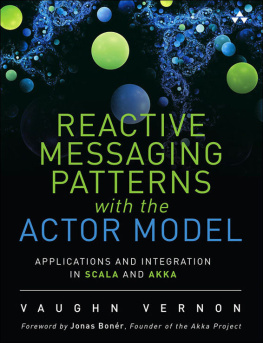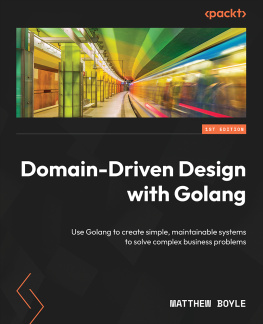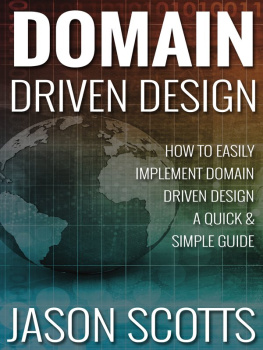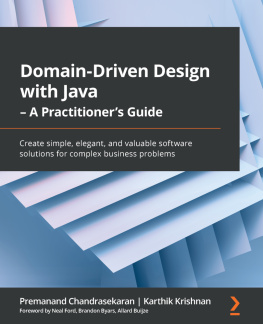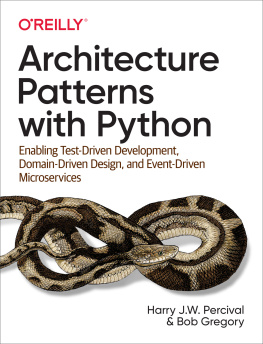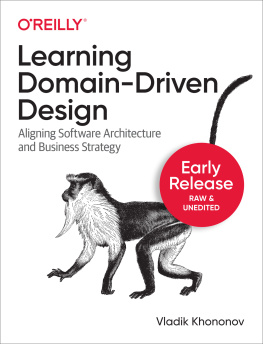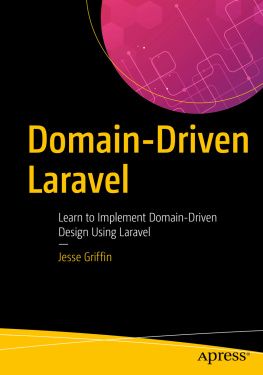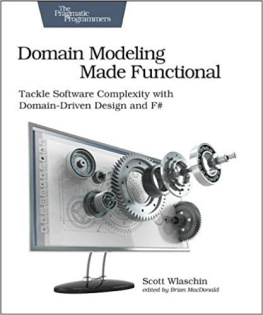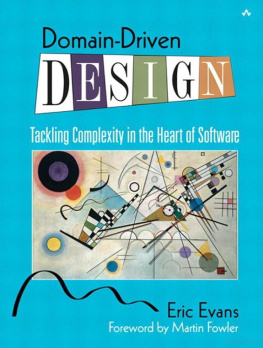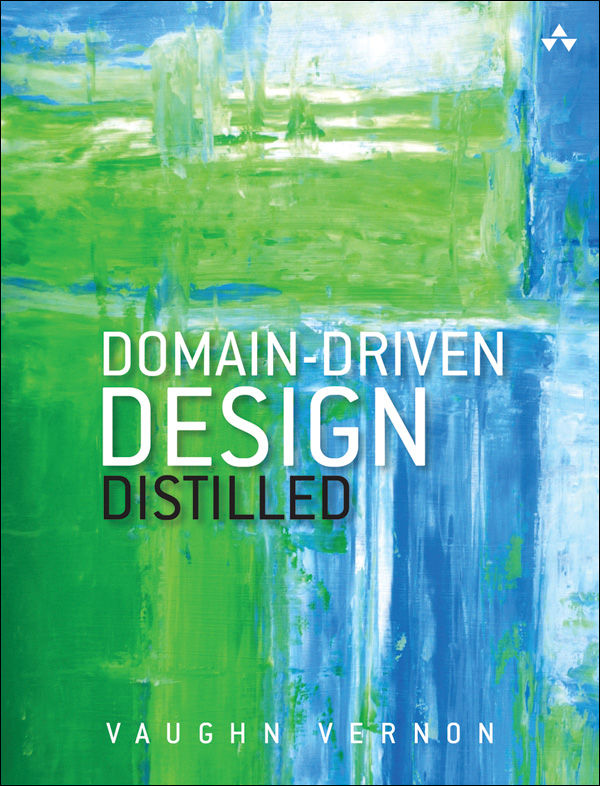About This E-Book
EPUB is an open, industry-standard format for e-books. However, support for EPUB and its many features varies across reading devices and applications. Use your device or app settings to customize the presentation to your liking. Settings that you can customize often include font, font size, single or double column, landscape or portrait mode, and figures that you can click or tap to enlarge. For additional information about the settings and features on your reading device or app, visit the device manufacturers Web site.
Many titles include programming code or configuration examples. To optimize the presentation of these elements, view the e-book in single-column, landscape mode and adjust the font size to the smallest setting. In addition to presenting code and configurations in the reflowable text format, we have included images of the code that mimic the presentation found in the print book; therefore, where the reflowable format may compromise the presentation of the code listing, you will see a Click here to view code image link. Click the link to view the print-fidelity code image. To return to the previous page viewed, click the Back button on your device or app.
Domain-Driven Design Distilled
Vaughn Vernon

Boston Columbus Indianapolis New York San Francisco Amsterdam Cape Town
Dubai London Madrid Milan Munich Paris Montreal Toronto Delhi Mexico City
So Paulo Sydney Hong Kong Seoul Singapore Taipei Tokyo
Many of the designations used by manufacturers and sellers to distinguish their products are claimed as trademarks. Where those designations appear in this book, and the publisher was aware of a trademark claim, the designations have been printed with initial capital letters or in all capitals.
The author and publisher have taken care in the preparation of this book, but make no expressed or implied warranty of any kind and assume no responsibility for errors or omissions. No liability is assumed for incidental or consequential damages in connection with or arising out of the use of the information or programs contained herein.
For information about buying this title in bulk quantities, or for special sales opportunities (which may include electronic versions; custom cover designs; and content particular to your business, training goals, marketing focus, or branding interests), please contact our corporate sales department at or (800) 382-3419.
For government sales inquiries, please contact .
For questions about sales outside the U.S., please contact .
Visit us on the Web: informit.com/aw
Library of Congress Control Number: 2016936587
Copyright 2016 Pearson Education, Inc.
All rights reserved. Printed in the United States of America. This publication is protected by copyright, and permission must be obtained from the publisher prior to any prohibited reproduction, storage in a retrieval system, or transmission in any form or by any means, electronic, mechanical, photocopying, recording, or likewise. For information regarding permissions, request forms and the appropriate contacts within the Pearson Education Global Rights & Permissions Department, please visit www.pearsoned.com/permissions/.
ISBN-13: 978-0-13-443442-1
ISBN-10: 0-13-443442-0
Text printed in the United States on recycled paper at RR Donnelley in Crawfordsville, Indiana.
First printing, May 2016
Nicole and Tristan
We did it again!
Contents
Preface
Why is model building such a fun and rewarding activity? Ever since I was a kid I have loved to build models. At that time I mostly built models of cars and airplanes. I am not sure where LEGO was in those days. Still, LEGO has been a big part of my sons life since he was very young. It is so fascinating to conceive and build models with those small bricks. Its easy to come up with basic models, and it seems you can extend your ideas almost endlessly.
You can probably relate to some kind of youthful model building.
Models occur in so many situations in life. If you enjoy playing board games, you are using models. It might be a model of real estate and property owners, or models of islands and survivors, or models of territories and building activities, and who knows what all. Similarly, video games are models. Perhaps they model a fantasy world with fanciful characters playing fantastic roles. A deck of cards and related games model power. We use models all the time and probably so often that we dont give most models a well-deserved acknowledgment. Models are just part of our lives.
But why? Every person has a learning style. There are a number of learning styles, but three of the most discussed are auditory, visual, and tactile styles. The auditory learners learn by hearing and listening. The visual learners learn by reading or seeing imagery. The tactile learners learn by doing something that involves touching. Its interesting that each learning style is heavily favored by the individual to the extent that he or she can sometimes have trouble with other types of learning. For example, tactile learners likely remember what they have done but may have problems remembering what was said during the process. With model building, you would think that visual and tactile learners would have a huge advantage over the auditory learners, because model building seems to mostly involve visual and tactile stimulation. However, that might not always hold true, especially if a team of model builders uses audible communication in their building process. In other words, model building holds out the possibility to accommodate the learning style of the vast majority of individuals.
With our natural affinity to learning through model building, why would we not naturally desire to model the software that ever increasingly assists and influences our lives? In fact, to model software appears to be, well, human. And model software we should. It seems to me that humans should be elite software model builders.
It is my strong desire to help you be as human as you can possibly be by modeling software using some of the best software modeling tools available. These tools are packaged under the name Domain-Driven Design, or DDD. This toolbox, actually a set of patterns, was first codified by Eric Evans in the book Domain-Driven Design: Tackling Complexity in the Heart of Software . It is my vision to bring DDD to everyone possible. To make my point, if I must say that I want to bring DDD to the masses, then so be it. That is where DDD deserves to be, and DDD is the toolbox that model-oriented humans deserve to use to create their most advanced software models. With this book, I am determined to make learning and using DDD as simple and easy as possible and to bring that to the broadest conceivable audience.
For auditory learners, DDD holds out the prospect of learning through the team communication of building a model based on the development of a Ubiquitous Language. For visual and tactile learners, the process of using DDD tools is very visual and hands-on as your team models both strategically and tactically. This is especially true when drawing Context Maps and modeling the business process using Event Storming. Thus, I believe that DDD can support everyone who wants to learn and achieve greatness through model building.
Who Is This Book For?
This book is for everyone interested in learning the most important DDD aspects and tools and in learning quickly. The most common readers are software architects and software developers who will put DDD into practice on projects. Very often, software developers quickly discover the beauty of DDD and are keenly attracted to its powerful tooling. Even so, I have made the subject understandable for executives, domain experts, managers, business analysts, information architects, and testers alike. Theres really no limit to those in the information technology (IT) industry and research and development (R&D) environments who can benefit from reading this book.



